Apple revealed the iPhone 15 Pro and iPhone 15 Pro Max during its Wonderlust event on September 12, 2023. These models are lighter, faster, and more durable than the previous generation thanks to several upgrades.
iPhone 15 and iPhone 15 Plus also received a handful of upgrades focused on an updated 48MP camera and Dynamic Island.
Apple hasn't separated its pro-class devices with differing features since the iPhone 12 series. In this case, the iPhone 15 Pro Max has a tetraprism lens that enables a fixed 120mm focal length, 5x the Main Camera, for the first time on an iPhone.
Otherwise, the products are mostly identical besides the size. The iPhone 15 Pro has a 6.1-inch display while the iPhone 15 Pro Max has a 6.7-inch display. The iPhone 15 Pro Max sees about 20% longer battery life over the iPhone 15 Pro.
What's next for iPhone
Apple revealed the iPhone 16 lineup during the It's Glowtime event in September 2024. It brought the Action button and Camera Control to all models, plus it ushered in the Apple Intelligence era.
With no more mystery around the 2024 iPhone, all eyes and rumors have turned to what's next in 2025. It seems Apple could ditch the Plus model in favor of a new "Slim" variant.
iPhone 15 Pro Features and Design
The bezels have shrunk even further in the iPhone 15 Pro, enabling Apple to shave a few millimeters from the now curved sides. The Dynamic Island is still present, covering the sensor housing for Face ID components and the selfie camera.
Pro models have a USB 3.2 Gen 2 Type-C port that enables up to 10Gbps data transfer. That's why users recording in ProRes can capture 4K 60Hz video directly onto an external SSD.
The Main Camera now defaults to a 24MP HEIF image, which is a higher resolution than 12MP while offering more dynamic range than 48MP. Users can choose to shoot in ProRAW via the camera app and get massive image files.
The A17 Pro is the first Apple Silicon processor built with the 3nm process. It is more powerful, more efficient, and can perform hardware ray tracing for games running on the iPhone 15 Pro. It has a 6-core CPU and a 6-core GPU.
The chipset is powerful enough to run more powerful games like "Resident Evil 4" and "Death Stranding." While not as performant as a dedicated gaming console, it does well enough as a modern handheld.
Wi-Fi 6e is now available, plus there's a second-generation Ultra Wideband chip set for precision finding. The satellite communication feature also got an update that enables calls for roadside assistance.
Like the iPhone 12, the iPhone 15 Pro and iPhone 15 Pro Max do not include a power adapter in the box. They do, however, have a USB-C cable. The same cable can be used to charge newer iPad models, as well.
Action button
The Ring/Silent Switch has been replaced by the Action button. The user can press and hold the button to perform a task that was assigned from the Settings app.
The Action button has several basic tasks it can perform, but there are two functions that open up a near infinite combination of actions. These are accessibility and Shortcuts.
Select from the following options for the Action button:
- Silent mode
- Focus
- Camera
- Flashlight
- Voice Memo
- Translate
- Magnifier
- Shortcut
- Accessibility
Users that can develop advanced Shortcuts have also taken to programming an Action button Shortcut that will perform different tasks based on different variables. When pressed, the executed Shortcut could run one action based on device orientation or the open app, for example.
Apple is expected to bring the Action button to all iPhone models in 2024.
Spatial Video
The iPhone 15 Pro and iPhone 15 Pro Max allows for spatial video recording that is viewable on the Apple Vision Pro. It uses the wide and ultra wide cameras to capture 3D video, though with very little separation.
Recording in spatial video is only possible while holding the iPhone horizontally. It captures video in 1080p at 30fps.
Spatial video requires at least some moderate lighting or else it won't record. It can be activated at any time by tapping a small Apple Vision Pro icon while in video mode in the Camera app.
Users can't capture Spatial Photos with the iPhone without access to third-party apps like Spatialify, Apple's native camera and Photos app do not support it. Developers have found ways to capture 3D photos and even 4K video in Apple's spatial format for Apple Vision Pro.
Stolen Device Protection
Reports of thieves stealing iPhones and device passcodes leading to complete Apple ID takeovers led Apple to release a new feature to stop it — Stolen Device Protection. The feature must be toggled on in iOS 17.3, and it changes how the passcode can be used to alter Apple ID and device settings.
With Stolen Device Protection on, users must use biometrics to authenticate changing certain features with no passcode fallback. For example, if a user is away from a trusted location like home or work and tries to change their Apple ID password, the iPhone will request Face ID then place a one-hour delay before requesting it again.
Users can disable the trusted location feature in iOS 17.4 so a time delay is always required.
If a thief steals the iPhone and passcode, goes to Settings, and requests to change the Apple ID password while standing in front of you, then uses your face to get past the first biometric, they still would have to wait another hour to scan your face a second time. The hour delay also gives users time to login to iCloud from another device and lock their iPhone by placing it in Lost Mode.
iPhone 15 Pro Max Review
Apple's annual iPhone update cycle creates a significant challenge for the company. We believe iPhone 15 Pro Max is an excellent year-over-year upgrade with titanium sides, a new 5x Telephoto Camera, and the promise of A17 Pro.
While the smaller iPhone 15 Pro saw many of the same upgrades, we believe the 5x camera is a must-have for photographers. A larger display and longer battery life make this the best iPhone you can buy.
Highlights from this review
- Lighter, smaller titanium frame with fewer color options
- Same great always-on display
- Seven cameras in your pocket
- 29 hours battery life
- 23 hour video playback, 95 hour audio playback
- A17 Pro introduces the future of mobile gaming
- USB 3.2 gen 2 Type-C opens up new possibilities
- Action button brings a new interaction paradigm to iPhone
- Despite new materials and design tweaks, it's more an evolved iPhone 12 than a new generation
Read the full iPhone 15 Pro Max review for a detailed evaluation and photos, or keep reading ahead for the summary.
Review: Design
Apple's shift from stainless steel to titanium is evident in the device's weight and finish. The edges have a soft matte coloring that is less prone to fingerprints, and the weight is reduced by about 10%.
The central frame is an aluminum structure housing the battery, processor, and other components. This makes it more repairable by having the front and back glass be separate components.
The IP68 water resistance rating returns, meaning the iPhone still can't be submerged — at least not on purpose. Apple won't cover water damage, though the iPhone should survive splashes and quick dunks.
Since the bezel shrunk, the device frame could be pulled in slightly. While it's not a big change, it's enough to notice the smaller size in hand.
Review: Display
Apple didn't change anything about its pro displays on the iPhone 15 Pro or iPhone 15 Pro Max other than the bezel getting smaller. It's still a Super Retina XDR always-on display with ProMotion.
The Dynamic Island is now a part of every iPhone 15 model, so developers are more likely to embrace the feature and Live Activities. New system features like the flashlight also use the Dynamic Island.
StandBy remains a favorite feature of ours from iOS 17. The always-on display enhances the feature, so pro users benefit from information at a glance.
Review: Cameras
Apple touted that the iPhone 15 Pro Max brought seven cameras to your pocket. This is technically accurate thanks to the various optical focal lengths and macro mode within the camera system.
The Main Camera's 48MP sensor in the iPhone 15 Pro can capture 24MP images anywhere between 1x and 2x with three pre-selected stops available — 24 mm, 28 mm, and 35 mm.
We found that images captured with the Main Camera at the new 24MP default were sharp and well contrasted. The various focal lengths provide plenty of options for framing the subject.
The 2x Telephoto crop from the Main Camera, the Ultra Wide Camera, and Macro modes still shoot 12MP images. However, they do benefit from improved image processing and better HDR.
The most important iPhone 15 Pro Max camera upgrade was the 120 mm fixed 5x Telephoto Camera. It enables incredible reach from a smartphone with good performance, even in poor lighting.
Review: A17 Pro
At the time of the review, no games or apps took full advantage of Apple's latest silicon in the iPhone 15 Pro. The A17 Pro has a lot of promise for the future of mobile gaming, but it's difficult to discuss, having not experienced it firsthand.
Benchmark scores proved promising, which coincided with Apple's claims of a 10% faster CPU and 20% faster GPU. Hardware accelerated ray tracing will be interesting to experience once a game launches with the feature.
Some concerns about overheating were raised during our review period that have since been addressed. The issue wasn't widespread and didn't affect our handset, but Apple released an update to fix the issue.
Review: USB-C
Apple's iPhone has finally moved on from Lightning in favor of the more universal USB-C port. It is a USB 3.2 gen 2 Type-C port for the pro models.
The move to USB-C has been a long time coming. Apple stopped offering other ports on MacBooks only a few years after Lightning was introduced, then iPads moved to USB-C, and now, finally, iPhones. Just in time to comply with EU regulations, too.
Most users shouldn't notice differences in day-to-day use cases. The iPhone charges at the same 20W speeds, and data transfer over a cable is a niche need.
Apple did enable a useful feature for videographers for the 10Gbps port — 4K60 ProRes recording directly to an SSD. This requires the SSD, cable, and any intermediary docks to support the USB 3.2 gen 2 speeds for best results.
Review: Action button
It isn't often that Apple introduces a new interaction paradigm to iPhone, but we're two years running with Dynamic Island and now the Action button. The new button replaces the mute switch and offers a range of custom functionality.
There's nothing particularly remarkable about the Action button itself. Apple could have introduced it at any time previously, but its functionality is amplified by the existence of Shortcuts.
Users are presented with a handful of control options that can be activated with the Action button, but the key ones are Shortcuts and Accessibility. These open the door to a near-infinite number of customizable controls.
A press and brief hold will activate the function anywhere in the operating system. Assigning a Shortcut folder enables a menu with seven Shortcuts to pop up.
Some apps map specific in-app functions to the Action button. We expect the functionality will improve as Apple introduces new features and developer-facing APIs.
iPhone 15 Pro Review
The above iPhone 15 Pro Max review covered most of what was new with the updated 2023 lineup. However, there are a few differences between the large and small pros.
The lightweight titanium is even lighter in the smaller iPhone 15 Pro. Plus, some users will prefer the 3x optical zoom to the new 5x found in iPhone 15 Pro Max.
Highlights from this review
- Same display with more easily repairable glass
- USB-C enhances what iPhone can do when paired with accessories
- Action button brings new utility to iPhone
- A17 Pro is faster and has great potential
- 23 hour battery life
- Up to 20 hours video playback, 75 hours audio playback
- Camera hardware remains largely unchanged year over year
Read the full iPhone 15 Pro review for a detailed evaluation and photos. An iPhone 15 Pro three months later review is also available.
iOS 18
Announced at WWDC 2024, iOS 18 is set to arrive in the fall alongside the iPhone 16. Here are some of the features users can expect to see.
Apple Intelligence
The most notable upgrade to Apple's upcoming operating systems is the integration of what Apple calls Apple Intelligence. It is a personal context based artificial intelligence designed to work primarily on-device and help streamline tasks in a personal way.
Some new features coming to the iPhone include on-device image generation, AI-powered writing and editing tools, and improved notification management.
It's worth noting that Apple Intelligence is only supported on the iPhone 15 Pro, M-series iPads, and M-series Macs. The iPhone 15 Pro and iPhone 15 Pro Max run the A17 Pro processor and have 8GB of RAM, which enable access to the new AI features.
Photos update
A new Collections feature in iOS 18 automatically organizes the library by topics like Recent Days, Trips, and People & Pets. If you have a few favorite collections, you can pin them for quick access to the collections or albums most important to you.
Messages updates
Apple has expanded Tapback options, now allowing users to respond to messages with any emoji, rather than the initial six it provided.
The new Send Later feature allows users to schedule when to send a message, which is perfect for ensuring you don't send someone a message when they're sleeping or when you want to schedule a birthday or anniversary message.
Apple has confirmed that RCS support will arrive in iOS 18. RCS will improve messaging with Android devices by supporting read receipts, typing indicators, sending over Wi-Fi, and higher-quality media.
Those who have an iPhone 14 or later will be able to use Messages via satellite. This new feature will allow users to send messages over iMessage and SMS, even without cellular or Wi-Fi service.
When using iMessage, users can still use key features like sending emoji and Tapbacks, and anything sent via iMessage is end-to-end encrypted.
Game Mode
In 2023, Apple introduced Game Mode to Mac — and a year later Game Mode is coming to the iPhone.
Game Mode minimizes background activity while gaming. This allows the iPhone to sustain high frame rates for long gaming sessions.
Locked and Hidden apps
Users can lock apps and require Face ID, Touch ID, or a passcode to unlock them, lessening the fear of handing off your iPhone to someone else. Locked apps will not appear in search and notifications, either.
Apps can also be hidden by dragging them to a hidden apps folder, requiring users to unlock the folder via biometrics or passcode before viewing the contents.
Home Screen, Lock Screen, and Control Center customization options
Now, on the Lock Screen, you can replace the controls at the bottom with something else, such as taking a note or quickly capturing a moment for your social media. If you have an iPhone 15 Pro, you can access these controls using the Action button.
As part of the expanded customization features, app icons, and widgets can now be scaled up to appear larger.
Users are no longer restricted to the standard app icon layout anymore. The new iOS 18 adds the ability to arrange apps along the bottom for quicker access or along the side to frame a favorite wallpaper.
Each page of the Home Screen can feature a unique layout.
iPhone 15 Pro price and release date
Pre-orders began on Friday, September 15 and the online Apple Store inventory ran out within the hour for pro models. Initial deliveries and in-store availability began on September 22.
The price didn't increase for the iPhone 15 Pro, but the iPhone 15 Pro Max has a new starting price since it no longer offers the 128GB option. Customers can choose from blue, white, black, and natural titanium color options.
The iPhone 15 Pro rumor cycle
Everything below this point was written before the product's respective announcements. This information will remain as a record of what was rumored so it can be compared to what has been released.
iPhone 15 Pro and Apple AI — Pre-WWDC 2024
Apple is set to reveal a slew of updates related to artificial intelligence and iPhone owners won't need an iPhone 16 to take advantage. The on-device models Apple is working on in addition to server-side models will work great on iPhone 15 Pro with the A17 Pro's advanced Neural Engine.
There are a lot of rumors and mounting evidence around Apple's plans for AI, but nothing is set in stone just yet. It seems the company could focus on a two-pronged approach by building proprietary AI tools that run locally in tandem with third-party tools that run in the cloud.
The push for on-device models would ensure privacy and security are maintained for users. One of the biggest concerns with AI and large language models is data privacy — as users don't want their private information training chatbots.
Apple researchers have published papers detailing image learning models, generation tools, and more. WWDC is being held on June 10 and it is expected to reveal Apple's AI strategy with iOS 18.
The rumor cycle around the iPhone 15 Pro lineup was as busy as ever. Many leaked features focused on the pro models because Apple tends keep updates for standard models small by comparison.
Apple naming conventions are difficult to predict because the infamous "s" could pop up at any time. Rumors stuck to Apple's standard naming convention for the most part, with one exception.
Multiple sources suggested that the iPhone 15 Pro Max would instead be called iPhone 15 Ultra. This rumor was around for the iPhone 14 rumors cycle as well, and has extended into the iPhone 16 rumors since.
Analyst and rumor monger Ming-Chi Kuo says the "Ultra" name will be used in 2024, but act as a new higher tier, rather than replacing iPhone 16 Pro Max.
iPhone 15 Pro rumors — Pre-September 2023
A lot of information was leaked about the iPhone 15 Pro lineup in the year leading up to its release. A few sources proved more reliable than others, but most of the biggest features were known ahead of Apple's September 12 event.
Color rumors pointed to a dark red option being possible. This rumor stopped being shared after a while and most reliable sources started suggesting a series of gray options and blue for the pro colors.
Titanium curved edges and thin bezels (Likely)
The rim around iPhone 15 Pro models could be made from titanium and feature a rounded edge design similar to the MacBook Pro lineup. The back edge would curve slightly as it meets the back glass panel.
This material change from stainless steel could decrease the weight of the phone significantly. Apple could choose to polish the titanium and have a similar finish to the existing stainless steel rim.
Rumors also suggest that the display bezel will be thinner than ever, though it will remain symmetrical thanks to the Dynamic Island. There isn't a lot of space to shrink the bezels further, but it could happen.
End of the Lightning Port (Likely)
The iPhone 15 Pro could finally be moving to USB-C after a decade with the Lightning port. This aging port replaced the 30-pin connector and offered novelty features like a reversible port and a more water-tight enclosure.
The prevalence of Lightning throughout Apple's lineup including iPhone could make a port transition difficult, despite many user's requesting the feature. The number of iPhone users with Lightning ports in their iPhones, iPads, and AirPods far outnumber Mac users with USB-C ports.
Apple may be caught in another lose-lose situation for its PR team if the iPhone 15 shifts to USB-C. Like when it transferred from the 30-pin connector, the shift to USB-C cable could face heavy scrutiny from customers and regulators alike.
Many businesses took years to shift away from Lightning, with some locations still sporting the 30-pin connector. It may be similar for the move to USB-C, though there will be more motivation since it is a global standard port.
Kuo shared that Apple may introduce USB-C to the iPhone 15 in 2023. It isn't clear if this is based on supply chain data or a leak, but he did say he took a survey. Presumably, the survey would have been taken from his supply chain consultants, but that isn't known.
The European Union has passed legislation that requires smartphone manufacturers to adopt the USB-C port as a uniform connector by 2024. However, the two-year deadline for the requirement gives Apple enough time to perfect another option entirely — going portless.
Rumors had previously indicated that Apple will remove all ports from its iPhone lineup in the near future, and USB-C will never make it onto iPhone. Those rumors haven't panned out, and it seems USB-C is going to happen in 2023 in at least the iPhone 15 Pro.
In late 2022, Apple is still releasing products with a Lightning port. The latest AirPods Pro 2 still use the connector despite rumors of Apple moving away from it in less than a year. The updated Siri Remote did shift to USB-C, a sign of the upcoming transition.
Rumors suggest that Apple could include Thunderbolt capabilities in the iPhone 15 Pro. That would enable the fast transfer of large files like ProRes video.
Even as the company moves to USB-C, it is expected to maintain the Made for iPhone (MFi) program. This would likely limit what third-party accessories and cables can do without Apple's MFi certification.
Portless (Unlikely)
Since their inception, having a physical connector for transferring power and data has been a staple of portable electronics. Despite that, Apple may ditch the physical connector in the iPhone 15 line entirely in favor of alternatives like MagSafe wireless charging, Qi charging, wireless data transfer, and smart connectors.
There aren't many apparent reasons why Apple would want to ditch a physical connector, but like the headphone jack before it, the company may be seeking more internal space for components. In addition, while a USB-C port can be waterproofed, having no connector at all would ensure improved water integrity.
For Apple to achieve a portless iPhone 15, it must first offer users suitable alternatives. The port is currently used for many accessories, from SD card dongles to musical recording equipment. Apple isn't likely to entirely remove such vital functionality from iPhone, though customers may have to pay for a new adapter.
Even Apple's own CarPlay uses the physical port to connect. Unfortunately, most modern vehicles don't come standard with wireless CarPlay, so again, Apple will have to address those customers. An obvious half-step solution would be to include a magnetic Smart Connector like on some iPad models.
Rumors of a Smart Connector coming to iPhone have circulated since the connector's inception on the first iPad Pro in 2015. Although the three-prong connection supports some data transfer, it isn't suitable for large files or streams of information.
Apple's MagSafe accessory system for iPhone is another possible solution. Though the current iteration only supports power transfer on the iPhone 13, a future version could include some data transfer elements.
As we get closer to September 2023, it is becoming more clear that USB-C is coming to iPhone 15. The idea of a portless model isn't gone, but it will take a large leap in wireless technology to come to fruition.
Return of Touch ID (Unlikely)
Touch ID was replaced by Face ID when Apple introduced the iPhone X. This new technology enabled all-screen Apple devices with no Home Button, though it did mean introducing a notch.
It wasn't a solution without its problems, as the feature needed to see a user's eyes, nose, and mouth to unlock the device. It faced issues with sunglasses and other face coverings, but did open up the ability for users to wear gloves without issue.
When the pandemic struck, this created an unprecedented issue with Face ID as iPhone users around the globe donned masks. Users complained of the now-impeded unlocking process and demanded Apple bring back Touch ID as a solution.
Instead, Apple offered a compromise for Apple Watch owners. If Face ID detected the user was wearing a mask, it would verify if the Apple Watch was authenticated then unlock the iPhone. Of course, this solution applied only to Apple Watch wearers — a much smaller population than iPhone users.
Apple announced a new version of Touch ID for the iPad Air 4, and later the iPad mini 6, which moved Touch ID to the power button. This ramped up speculation that Apple would surely include Touch ID in the iPhone 13's power button, but to no avail.
Rumors and patents show that Apple has been working on a Touch ID solution for iPhone, but not in the power button. Ming-Chi Kuo had believed that Apple would implement Touch ID under the display by 2023, but has since changed his prediciton. With advances in how the iPhone detects faces with masks, Apple may not need to bring back Touch ID at all.
Android devices have used under-display fingerprint readers since at least 2018 to some success. But as with 120Hz display refresh, Apple likely wants the technology to be perfected before implementing it in their smartphone — if at all.
Periscoping Cameras (Likely)
A new camera system could be used on the "iPhone 15" to enable more optical zoom. The iPhone could have a much longer zoom by utilizing a folding camera system within the device to put more space between the lens and the sensor. It isn't clear if this would replace Apple's existing Telephoto lens or add a fourth lens with this capability.
While the iPhone 14 Pro can zoom to 3x, a 77mm equivalent, that isn't too distant a zoom. The 77mm focal length is great for portraits or getting closer to a relatively close subject, but it still isn't enough for wildlife photography or sporting events. Those situations require much longer lenses to capture the subject.
Samsung utilizes periscoping and algorithms to enable clear capture of subjects at 100x magnification. Thanks to the long lens hidden away within the phone's body, this is possible. Apple has been testing such a lens for future iPhones, but it wasn't clear if or when it would be implemented.
Kuo released another report in December 2021, restating that the "iPhone 15" may have a periscope lens system. It is still unclear if this is an upgrade to the existing telephoto lens or if it will be included as a new fourth lens. Rumors suggest the former.
According to supply chain reports released in April 2022, multiple manufacturers have been tapped to produce components needed for a periscope camera system. The components are allegedly on order for use in the "iPhone 15."
Reports throughout 2023 have increasingly suggested the periscope camera is coming to the larger iPhone 15 Pro. Kuo even states that the upgrade will be a primary driver of sales for the device.
Apple 5G Modem (Possible)
Intel exited the modem business and left Apple an opportunity to enter yet another vertical. However, progress in developing an in-house modem has been slow and it isn't clear when one would appear.
In the interim, Apple has used Qualcomm to provide 5G modems to the iPhone. This renewed partnership may extend much longer than initially expected, as Apple has allegedly stopped development of in-house Wi-Fi and cellular chips.
Apple Silicon could gain modem-based superpowers thanks to greater integrations. Apple prides itself on vertically integrated technology and adding modems to the stack could present a significant boon to users.
It is expected that Apple will resume development of its in-house wireless chipsets after the move to 3nm is completed for A17 and M3. Priorities had to shift to the 3nm transition, so modem development took a back seat.
Apple A17 Bionic processor
The iPhone 15 lineup will get a new processor — at least the pro models will. The standard models will get the A16 Bionic used in the iPhone 14 Pro.
The A17 Bionic is expected to make a leap to the next processor manufacturing process from 5 nanometer to 3 nanometer. This will increase the power and efficiency of the processor.
A rumor suggests that the A17 pro chip will have 6 CPU and 6 GPU cores and will run at 3.70 GHz. This is an increase over the A16's 6-core CPU and a 5-core GPU.
Two selfie cameras (Unlikely)
There may be more for the Dynamic Island to cover on the updated iPhone. Rumors suggest one model may have two selfie cameras, though the use case is unknown.
Two selfie cameras may create an issue for the Dynamic Island software, as smaller devices will quickly run out of space to show app information on either side of the hardware. Apple could move more sensors under the glass and shrink the size of the housing to allow two cameras to fit neatly, but it isn't yet clear if that is its approach.
This rumor was shared early by a somewhat reliable source. It hasn't been repeated since, and more reliable leakers haven't mentioned it.
Capacitive buttons (unlikely)
Several rumors have suggested Apple wants to get rid of physical, pressable buttons. That includes the mute switch that's been on every iPhone so far.
The volume buttons would join into one large capacitive surface, and the power button would also become capacitive. In place of the mute switch would be a small capacitive button.
These buttons would operate similarly to the capacitive Home Button that used a haptic engine to simulate a button press. Some expect the volume button to be controllable via sliding gestures as well.
The mute button could have a single function, but some hope Apple would open up its functionality to act similar to the Apple Watch Ultra's Action Button — programmable based on certain apps or conditions.
Action button (Possible)
Multiple reliable sources have reported that Apple has backed away from capacitive buttons. It seems the iPhone 15 Pro models will instead have the standard buttons found on older models, but the mute switch may still be replaced with a programmable "Action" button.
Dummy models used to help case makers prepare case designs prior to Apple's iPhone announcement show the new button in place of a mute switch. Since it is a button and not a switch that has to travel up and down, the cutout is smaller.
This smaller cutout is also shown in cases believed to be for the updated iPhone, showed in a leak in June. The sources have revealed such components and cases accurately before.
Evidence is mounting that Apple could move to an action button for iPhone 15 Pro, though it isn't set in stone. Many of these leaks could be based on older production testing models and not the final shipping model.
Case makers seem to believe the Action Button exists as leaks keep pouring in from reliable sources showing the button cutout in cases. These could be guesses, but it's increasingly unlikely.
Code in iOS 17 suggests users will be able to choose from nine options to control when the Action Button is pressed.
- Accessibility
- Camera
- Flashlight
- Focus
- Magnifier
- Shortcuts
- Silent Mode
- Translate
- Voice Memos
Super bright OLED (Possible)
One rumor suggests that Samsung is working on releasing a new OLED display type that can support up to 2,500 nits. The current iPhone 14 Pro can output up to 2,000 nits in direct sunlight.
The basis of this rumor is loose at best. Samsung is allegedly working on this display type for use in its own smartphone lineup, and it isn't clear if it would be used in Apple's.
"iPhone 15" Price and Release Date
Predicting the price of a device that will be released so far in the future isn't exactly a science, but looking at Apple's pricing trends can give a hint. Apple didn't deviate from its usual pricing structure for iPhone 14, and it could do the same in 2023.
Apple could introduce a new storage tier at 2TB for the iPhone 15 Pro to make space for its increasingly demanding features like ProRes video. That could bring an iPhone's price dangerously close to $2,000. Also, "iPhone 15 Fold" would be sold as an ultra-premium model and likely start at around $1,499.
Rumors have pointed to price increases at the high end. Pro models could cost up to $200 more due to the materials used, periscope camera, and new processor.
One analyst believes the Pro Max model could be delayed into October due to Sony being unable to supply a camera part in time for the periscope upgrade. If this is true, the other models could launch in September separately.
Apple is expected to announce its "iPhone 15" lineup in September 2023.

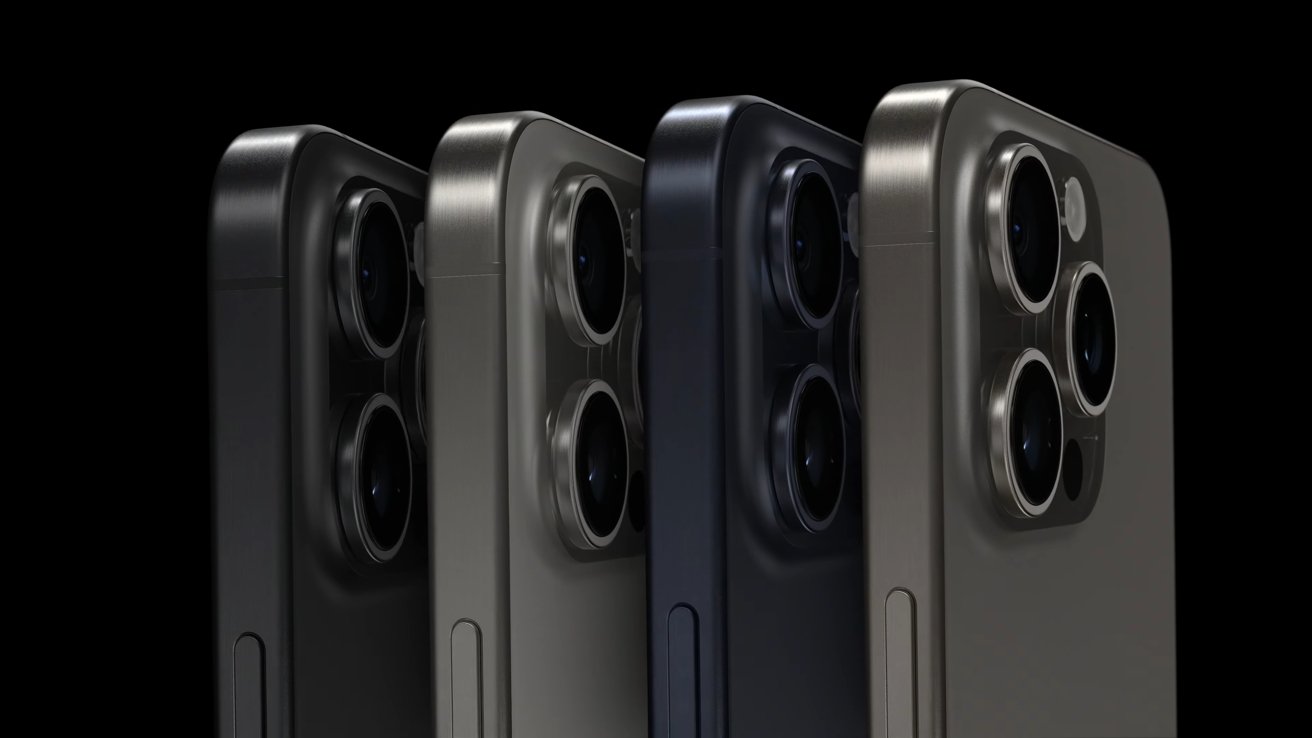






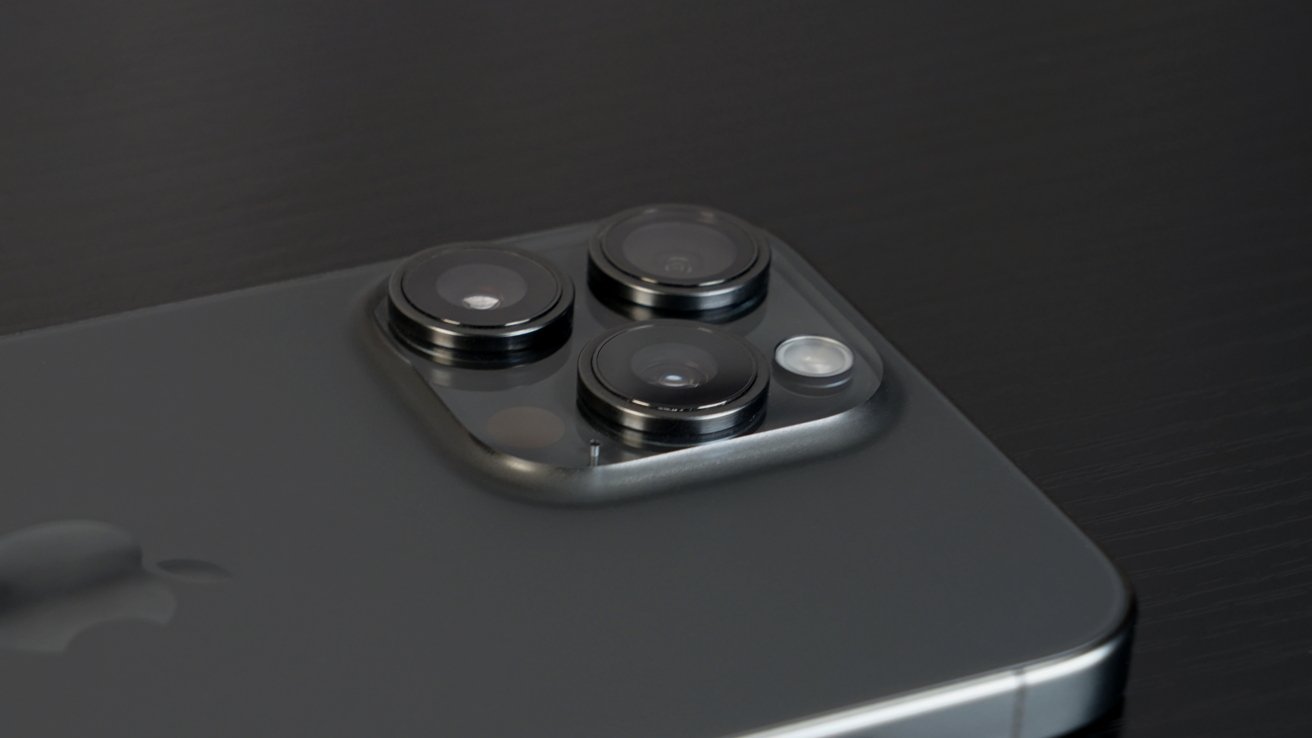

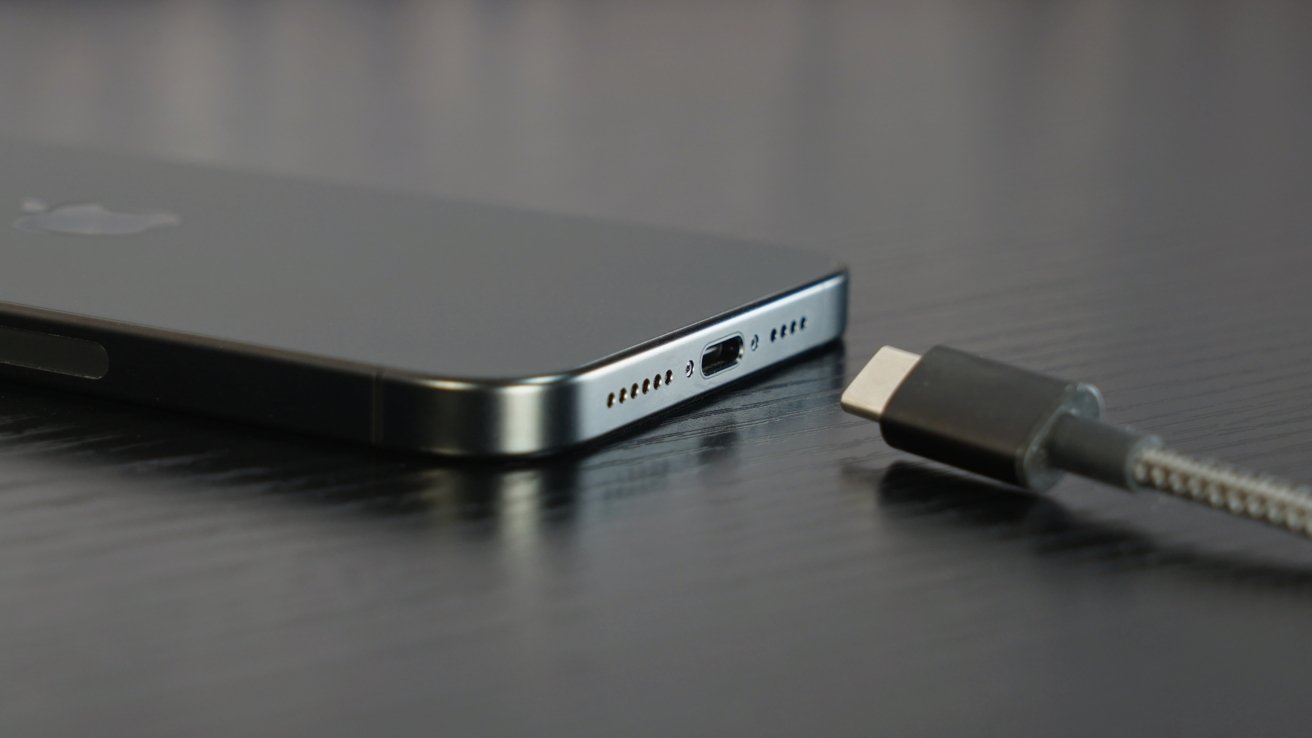



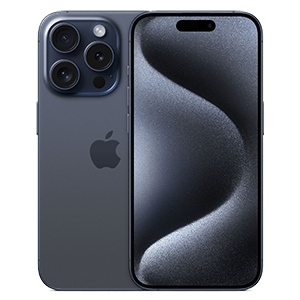

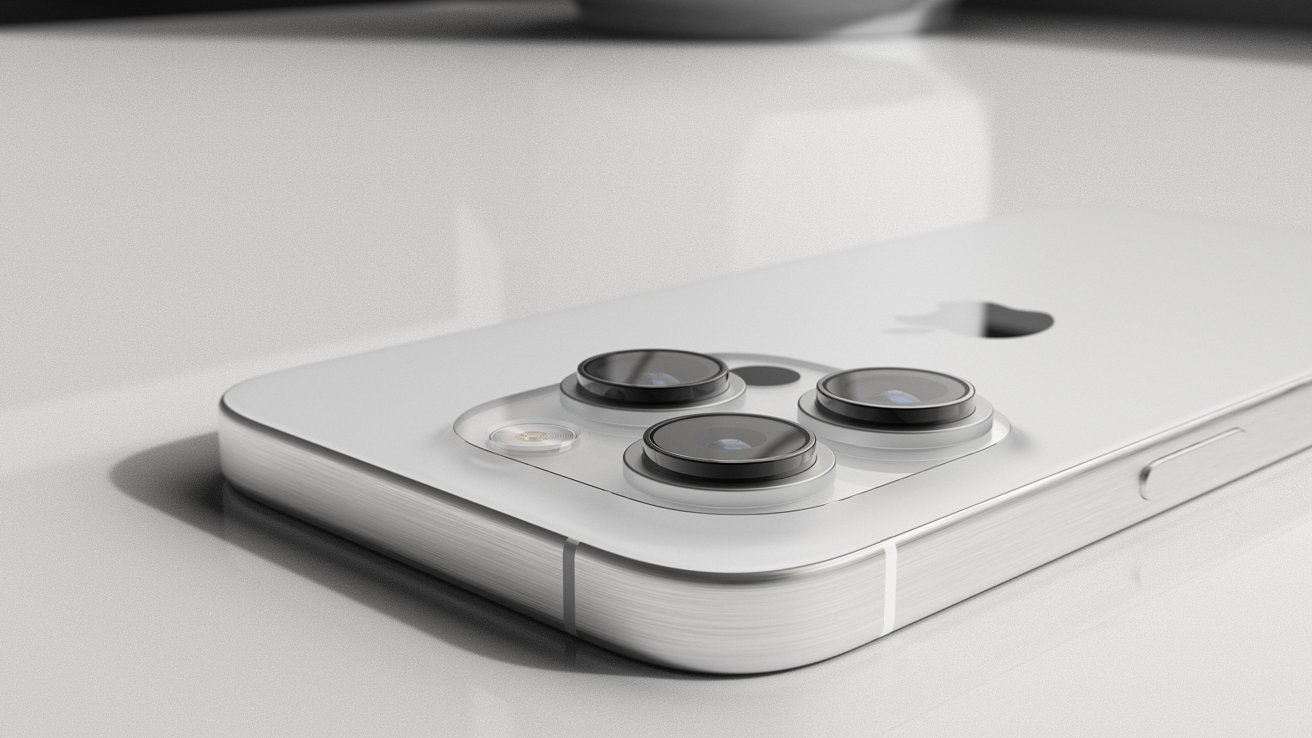







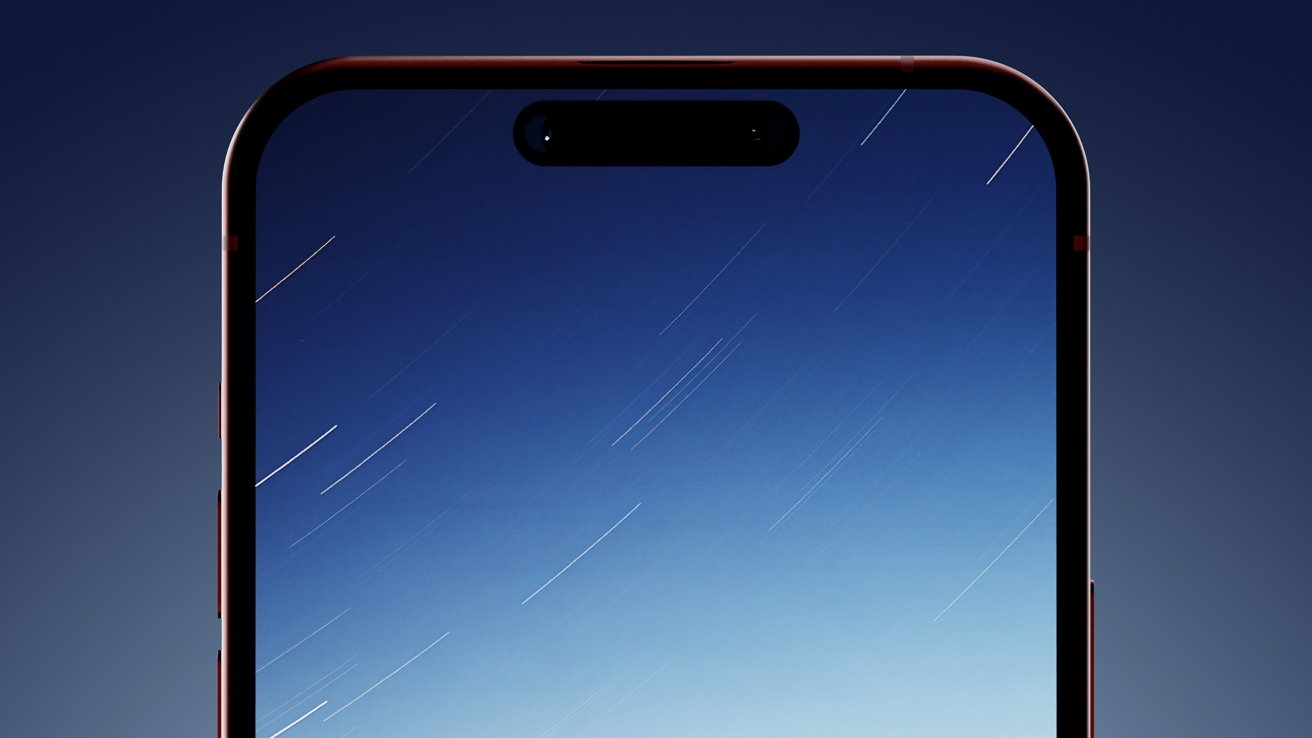

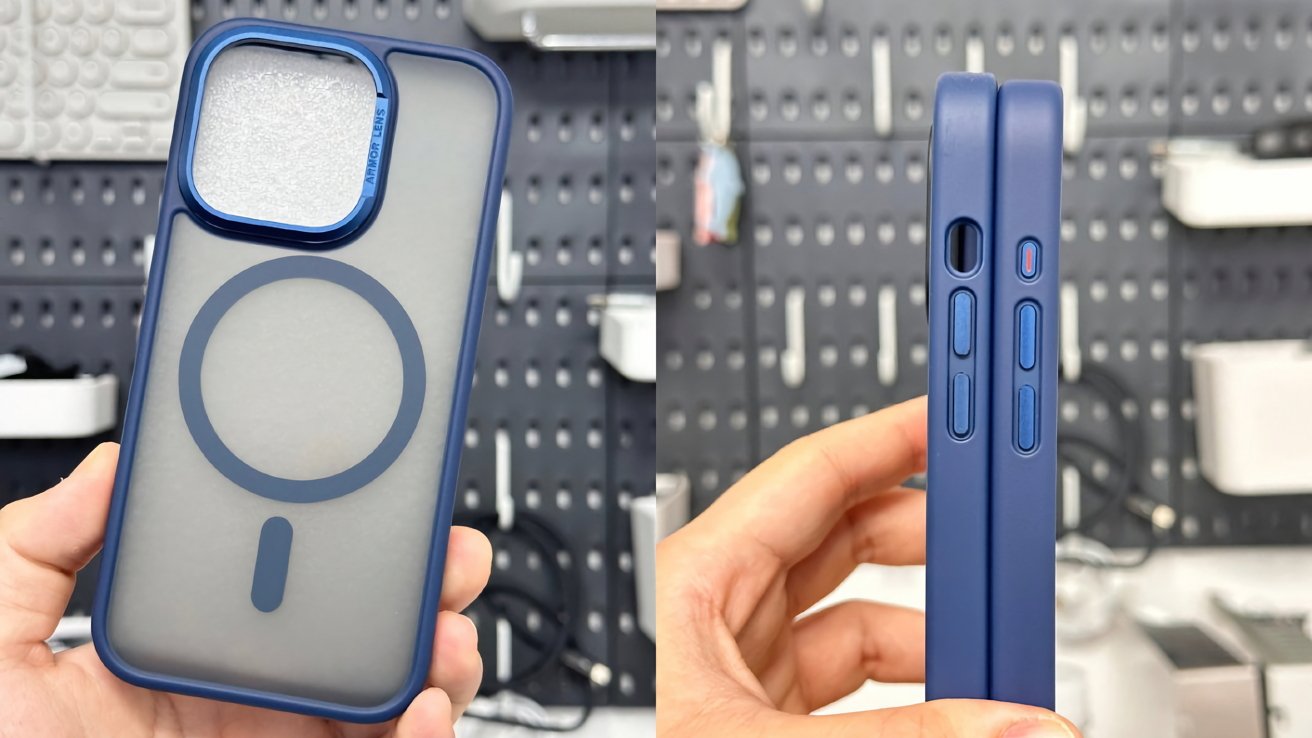
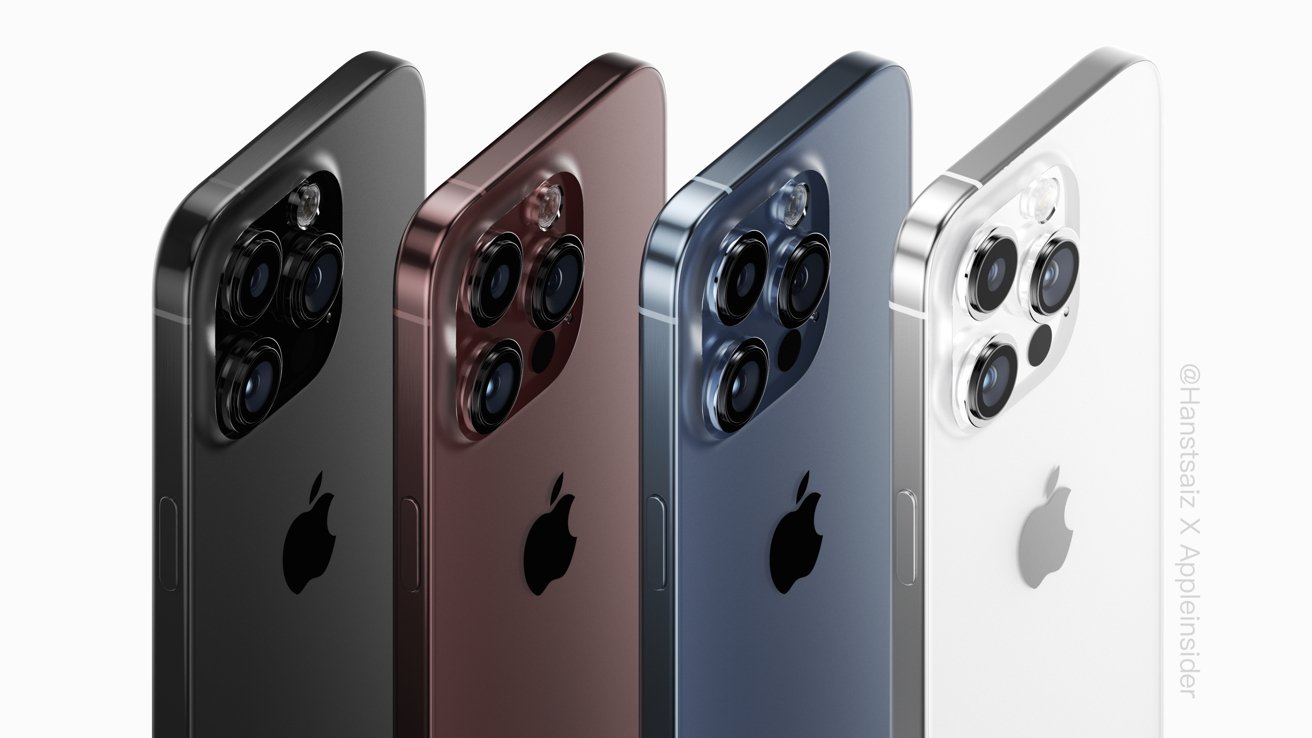

 Marko Zivkovic
Marko Zivkovic
 Andrew Orr
Andrew Orr
 Malcolm Owen
Malcolm Owen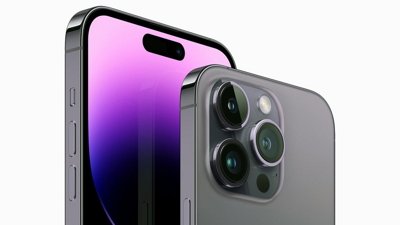
 Charles Martin
Charles Martin





